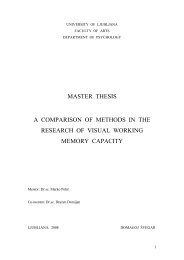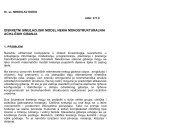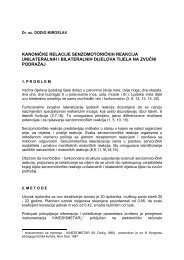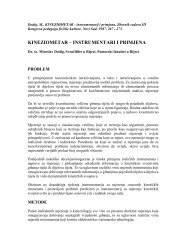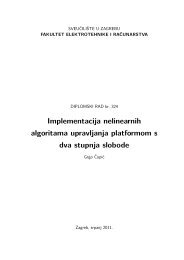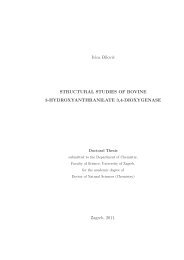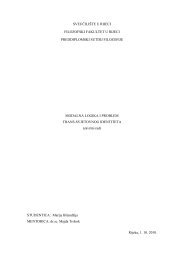Investigating Macroeconomic Determinants of Happiness in ...
Investigating Macroeconomic Determinants of Happiness in ...
Investigating Macroeconomic Determinants of Happiness in ...
Create successful ePaper yourself
Turn your PDF publications into a flip-book with our unique Google optimized e-Paper software.
happ<strong>in</strong>ess positively up to a certa<strong>in</strong> po<strong>in</strong>t, and negatively afterwards. The impact <strong>of</strong><br />
unemployment and GDP per capita is <strong>in</strong>significant. S<strong>in</strong>ce government expenditure is our ma<strong>in</strong><br />
variable <strong>of</strong> <strong>in</strong>terest, we next test the robustness <strong>of</strong> our results by <strong>in</strong>clud<strong>in</strong>g it <strong>in</strong> the regression<br />
with only one <strong>of</strong> the rema<strong>in</strong><strong>in</strong>g macroeconomic variables <strong>in</strong> turn. The results are given <strong>in</strong><br />
Table 4. We present only the results on macro variables, s<strong>in</strong>ce the ones on micro variables do<br />
not change <strong>in</strong> terms <strong>of</strong> signs and significances with different specifications <strong>of</strong> macro<br />
variables.<br />
Table 4 Marg<strong>in</strong>al effect on macroeconomic variables <strong>in</strong> different comb<strong>in</strong>ations<br />
Variable 1 2 3<br />
Inflation<br />
0.00048<br />
(0.279)<br />
Unemployment<br />
-0.00036<br />
(0.852)<br />
GDP per capita<br />
-1.45e-07<br />
(0.971)<br />
General government expenditure<br />
0.0105*** 0.01044** 0.01051**<br />
(0.007) (0.027) (0.027)<br />
General government expenditure squared<br />
-0.00023** -0.00022* -0.00022*<br />
(0.018) (0.063) (0.058)<br />
Socio-demographic variables <br />
Country dummies <br />
Wave dummies <br />
p-values are <strong>in</strong> parenthesis, while ***, ** and * denote significance at 1, 5 and 10 percent, respectively.<br />
Dependent variable: reported happ<strong>in</strong>ess.<br />
Source: authors’ calculation.<br />
Table 4 presents the results when government expenditure is comb<strong>in</strong>ed with <strong>in</strong>flation<br />
(model labelled 1), unemployment (model labelled 2) and GDP per capita (model labelled 3).<br />
Our f<strong>in</strong>d<strong>in</strong>g that the relationship between government expenditure and happ<strong>in</strong>ess is <strong>in</strong>versely<br />
U-shaped seems to be robust. Namely, the signs and significances do not change notably<br />
when government expenditure is comb<strong>in</strong>ed with different variables. Neither <strong>of</strong> the other<br />
variables is statistically significant <strong>in</strong> this sett<strong>in</strong>g.<br />
As mentioned before, the presented marg<strong>in</strong>al effects are calculated at the averages <strong>of</strong> the<br />
variables <strong>in</strong> the model. To be more precise, the so far presented macroeconomic results are<br />
calculated for average <strong>in</strong>flation <strong>of</strong> 47.81 percent, unemployment <strong>of</strong> 12.79 percent, GDP per<br />
capita <strong>of</strong> $10520.81 and general government expenditure <strong>of</strong> 17.72 percent (see Table 2).<br />
However, <strong>in</strong> our op<strong>in</strong>ion it would make more sense to calculate the marg<strong>in</strong>al effects at some<br />
other levels. This is because the above presented figures refer to a very heterogeneous pool <strong>of</strong><br />
years and countries. We, therefore, decide to calculate the marg<strong>in</strong>al effects us<strong>in</strong>g current<br />
values <strong>of</strong> the macroeconomic variables. The latest year for which we have data on all the<br />
17




